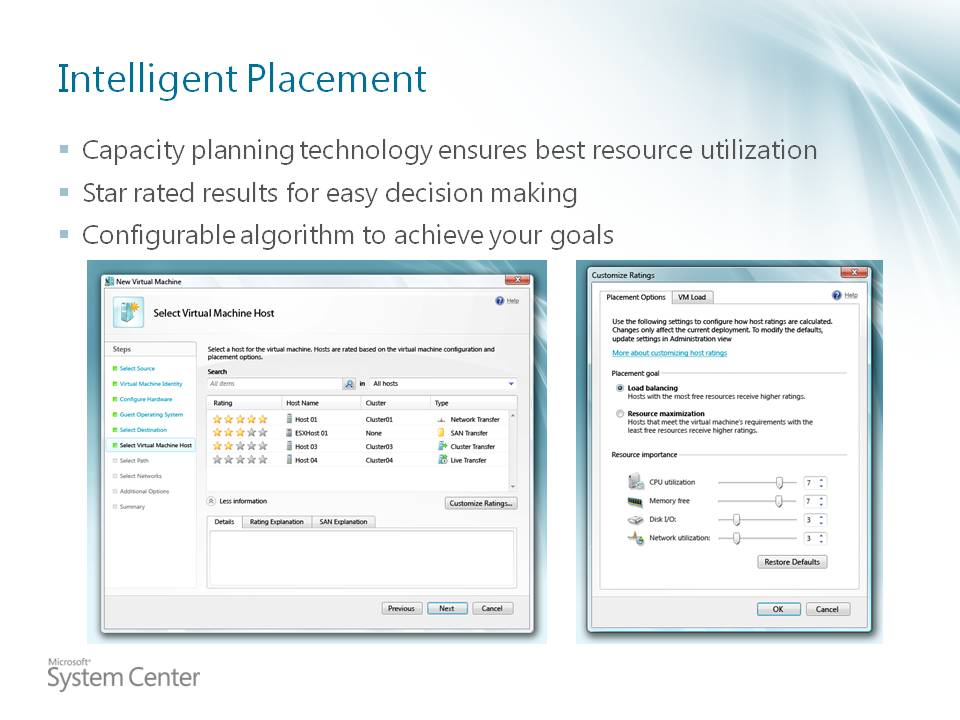Intelligent Placement in SCVMM 2008
Intelligent Placement feature is one of the unique functionalities that you will only find in Microsoft virtualization technology offerings. In VMM 2008, we continue expanding support of our intelligent placement functionality into those newly supported host and VM platforms, including VMware environment. So, when you use SCVMM 2008 to manage your VMware environment, not only will you get a "single-pane-of-glass" management tool, you'll also get this advanced feature for your ESX hosts that does not exist in VMware.
Let me explain what Intelligent Placement is and how it works:
What is Intelligent Placement?
How Intelligent Placement works?
Intelligent Placement is a capacity planning function. We take various performance (CPU, memory, disk, etc.) data collected from the VM and the host where the VM runs, feed that into our modeling module, mix it with user-defined placement perference (priority), and at the end, for a given VM, we generate a set of ratings for hosts that are managed by VMM.
How is the host rating calculated?
The top three things that you must know about Intelligent Placement in SCVMM 2008:
- Understanding your placement requirements
- Do you want to consolidate your servers? or you want to load balance your workloads?
- Characteristics of your new workloads (CPU-bound or disk-bound or memory-bound or network-bound)
- We profile your existing VM workloads
- Scoping your hosts
- Once you defined your rating criteria based on your workload requirements, VMM will calculate the ratings for all your available hosts.
- But, is the highest rating host you wanted for placement? What if you need a host in a specific zone (dev / test / production)? What if you need a host that is capable of quick migration or VMotion?
- Hence, the next question you should consider is what zone (location, groups, domains, etc.) you want your workload to be placed.
- Over-Committing
- SCVMM 2008 allows you to over-committing CPU resouces, but it does not allow over-committing memory resources.
- When planning for your workload placement, considerations need to be made in balancing VM consolidation as well as risks in peaking out your physical resource capacity (by placing more in your reserve or paying for HA solutions).
Thanks for reading,
Cheng


